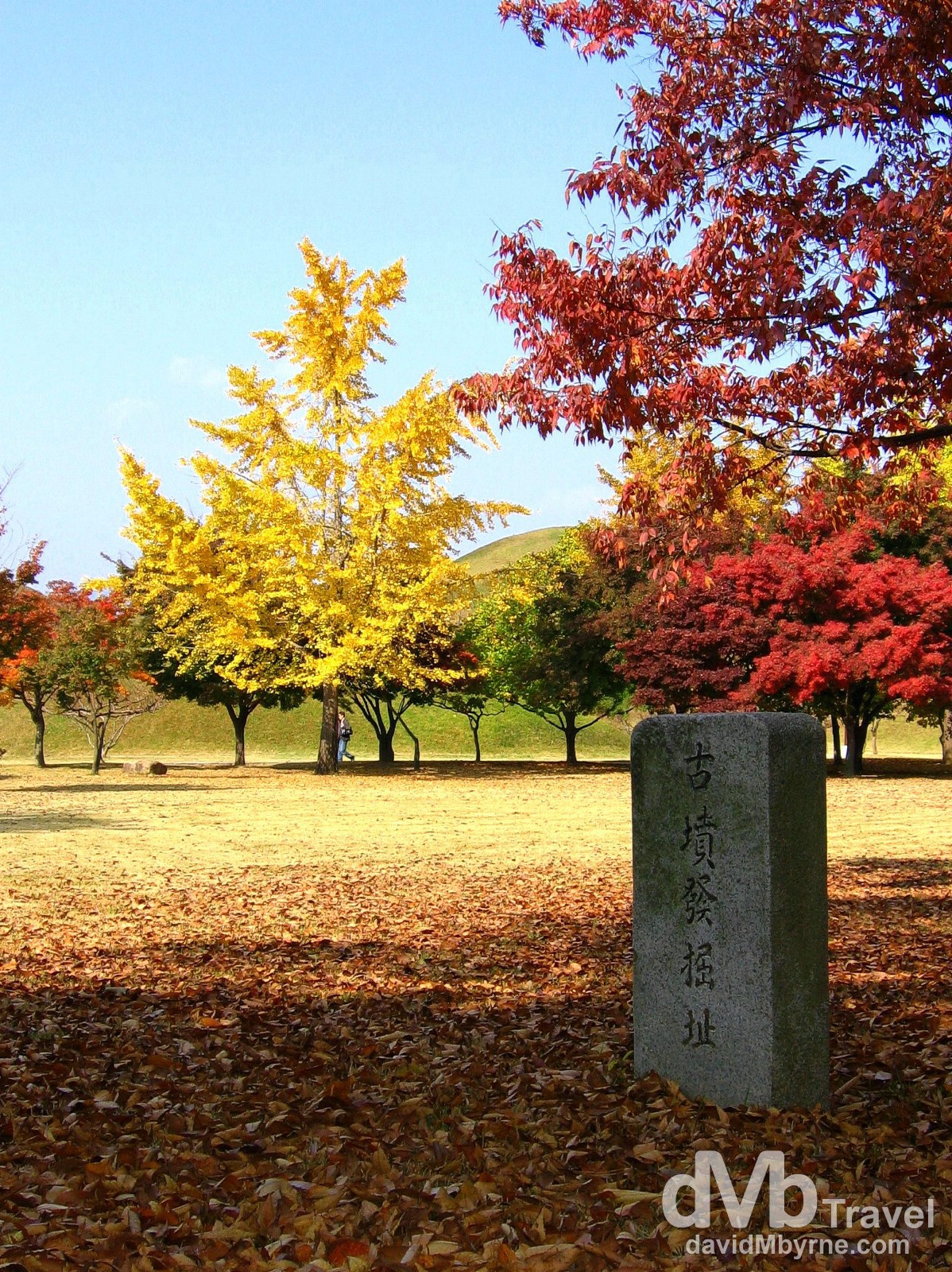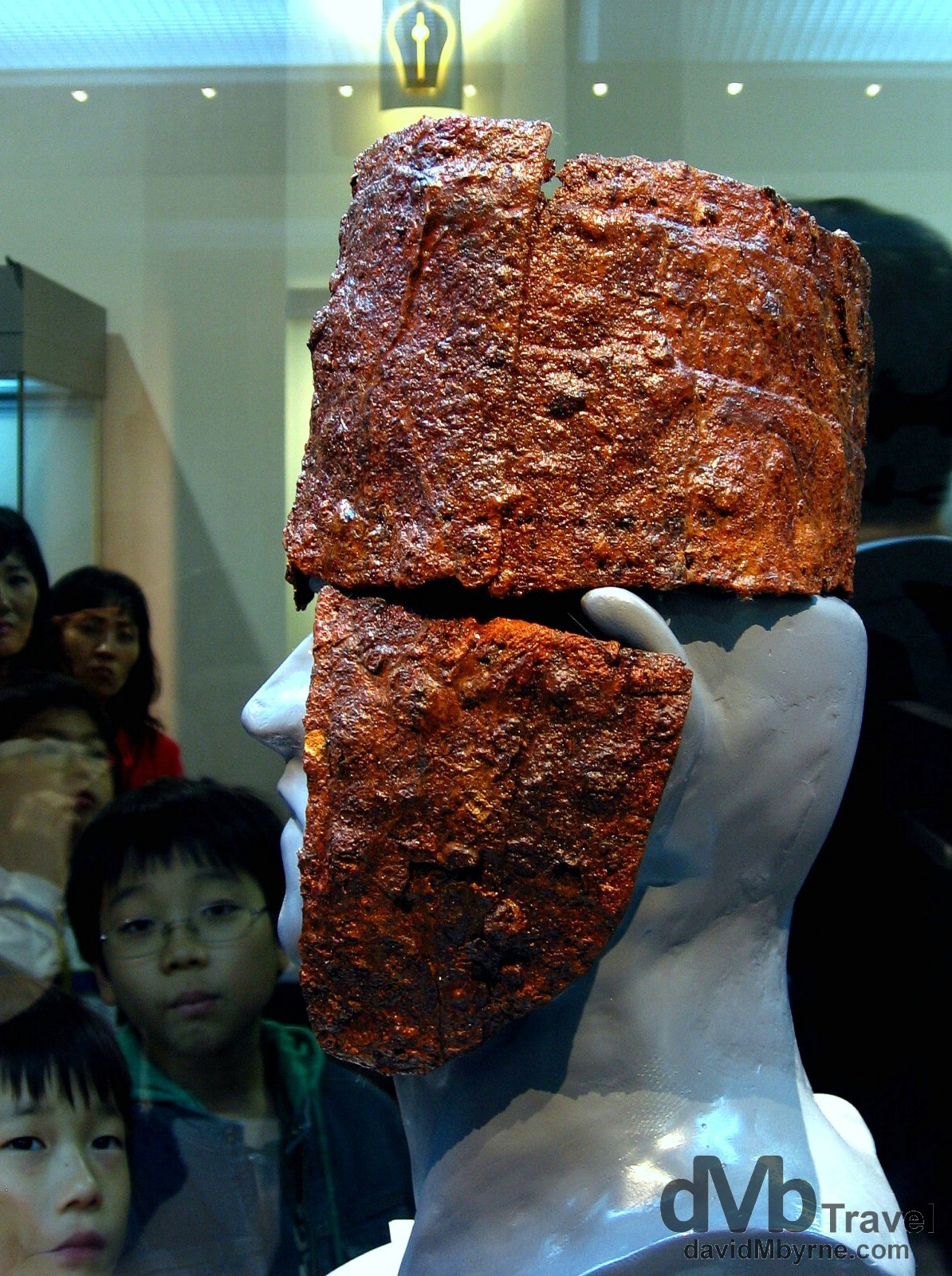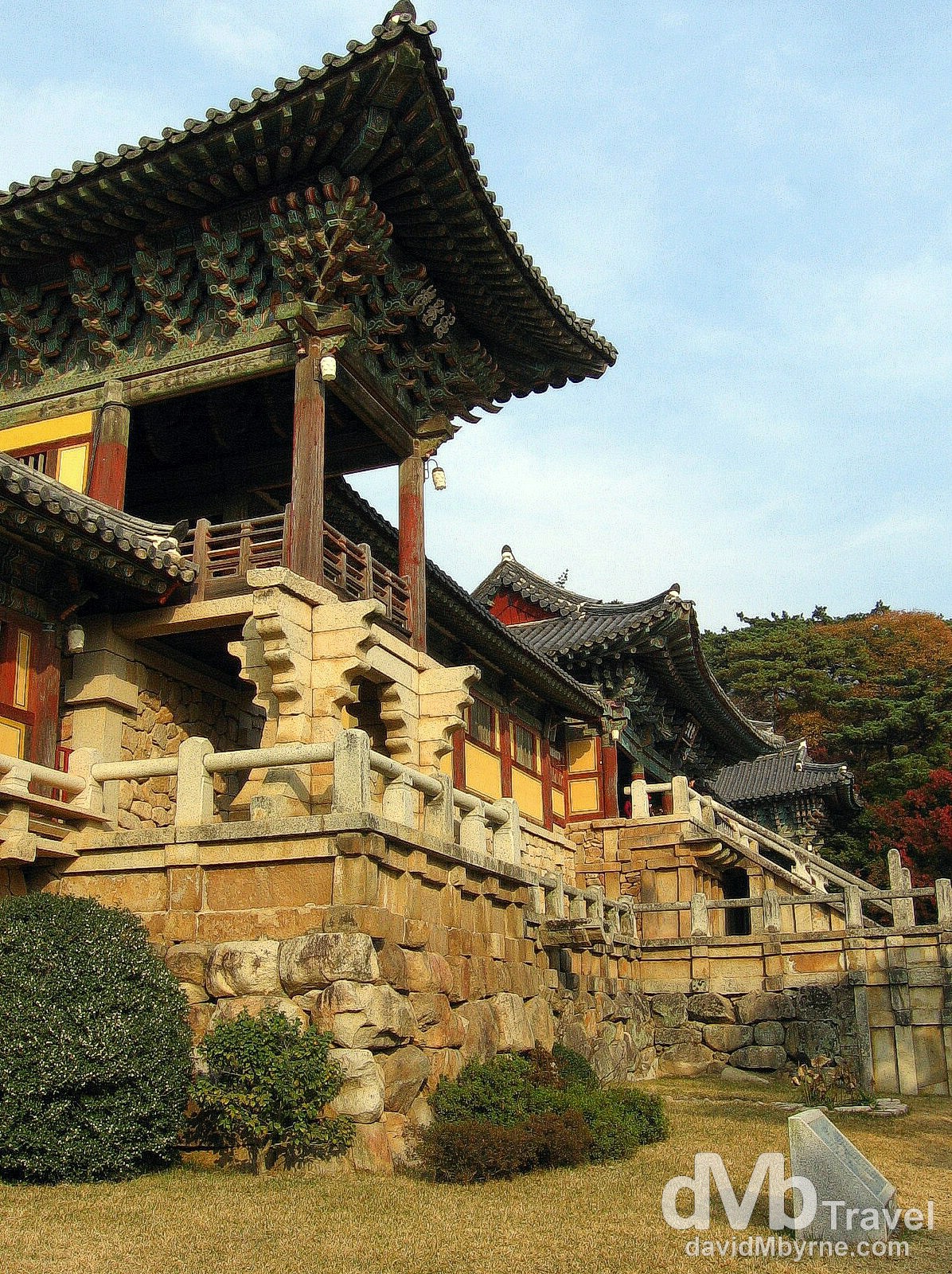Gyeongju is a coastal city in the southestern corner of the Korean peninsula. The city is famous throughout Korea as the capital of the ancient Korean Silla Dynasty, a dynasty that rose at the turn of the 1st millennium and ruled most of the Korean Peninsula from the 7th to the 9th centuries. A vast number of archaeological sites and cultural properties from this period remain in the city, resulting in Gyeongju often being referred to “the museum without walls“. There are two UNESCO World Heritage listed sites in the area, Seokguram Grotto and Bulguksa Temple & Gyeongju Historic Areas, the latter of which comprises of five distinct areas around Gyeongju which contain a remarkable concentration of temple & palace ruins, sculptures, reliefs, tomb gardens, outdoor pagodas, & other cultural artefacts left by the Silla Kingdom, all of which bear outstanding testimony to the Silla’s cultural achievements.
Daereungwon Tomb Park

The Silla Dynasty (57 BC – 935 AD) is especially revered in Korean history as it was the first dynasty to unify the country. They rose at the turn of the 1st millennium and ruled most of the Korean Peninsula from the 7th to the 9th centuries. Most of the dynasty rulers are entombed here in Gyeongju’s Daereungwon Tomb Park, a landscape dotted with tomb mounds. There are over 120 tombs here but only a few have been opened, with the exact occupant, and thus date, of most of the tombs still unknown. The tombs that have been excavated have yielded a huge and impressive array of treasures from the period, most of which are on display in the nearby National Museum. Daereungwon Tomb Park in Gyeongju (![]() ), South Korea. November 10th 2007.
), South Korea. November 10th 2007.
– UNESCO commenting on Gyeongju Historic Areas

Autumnal scenes in Daereungwon Tomb Park, Gyeongju, South Korea. November 10th, 2007.
Gyeongju National Museum

A headpiece, a remnant of the Silla era unearthed in one of the nearby Silla tombs, on display in the Gyeongju National Museum, Gyeongju, South Korea. November 10th, 2007.
Bulguksa Temple

The Bulguksa Temple (temple of the Buddha land) is the most famous temple in Korea and home to seven of the country’s listed National treasures. A temple was first constructed on the site in 528, but, & like nearly every historic building in Korea, the present day structure is a modern day reconstruction following centuries of wars and foreign invasions. The temple is classified as ‘Historic and Scenic Site No. 1’ by the South Korean government and in 1995 it, along with the nearby Seokguram Grotto, was added to the UNESCO World Heritage List of protected sites. The temple, considered as a masterpiece of the golden age of Buddhist art in the Silla kingdom, is currently the head temple of the 11th district of the Jogye Order of Korean Buddhism. Bulguksa Temple, Gyeongju, Korea. November 10th, 2007.
– UNESCO commenting on Seokguram Grotto and Bulguksa Temple

Doors in the grounds of the UNESCO-listed Bulguksa Temple, Gyeongju South Korea. November 10th, 2007.
______________________________________________________________________
